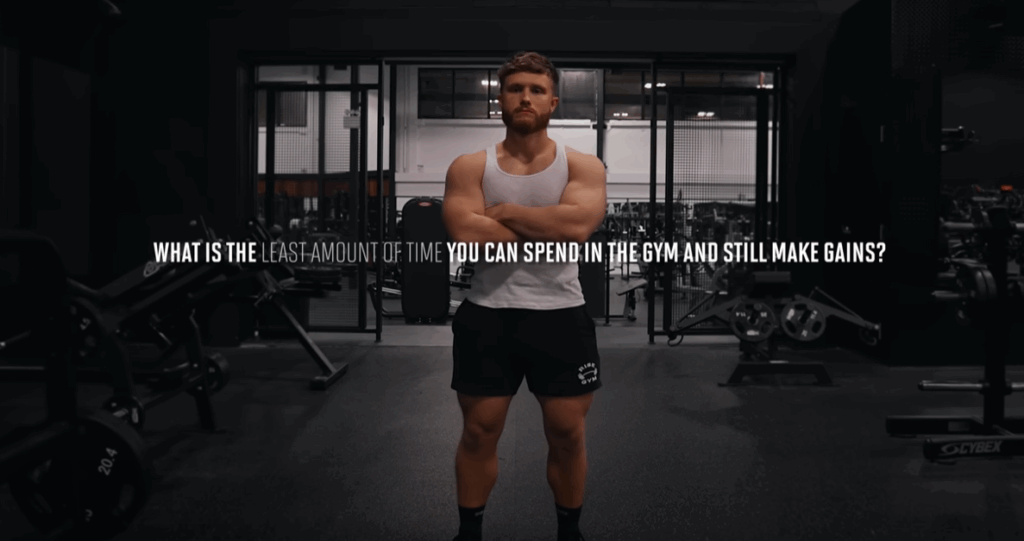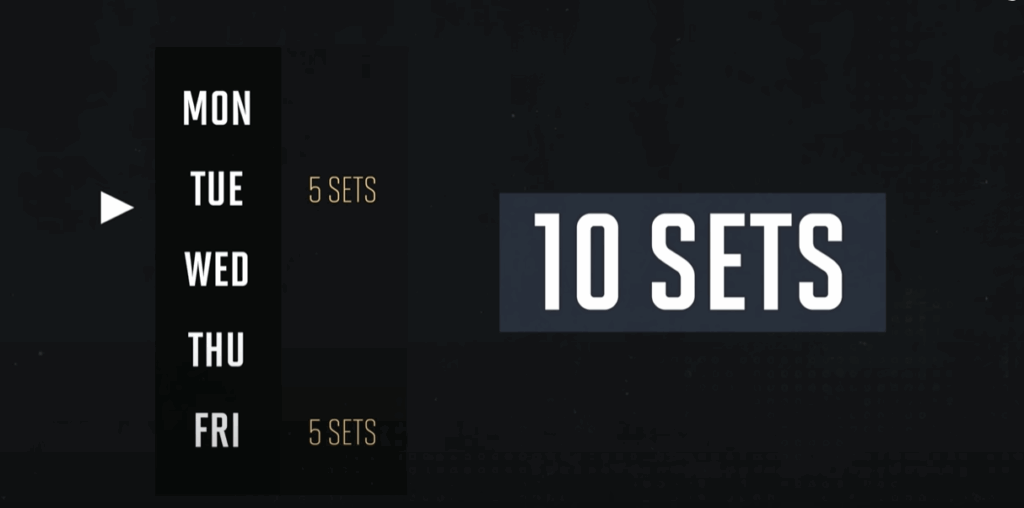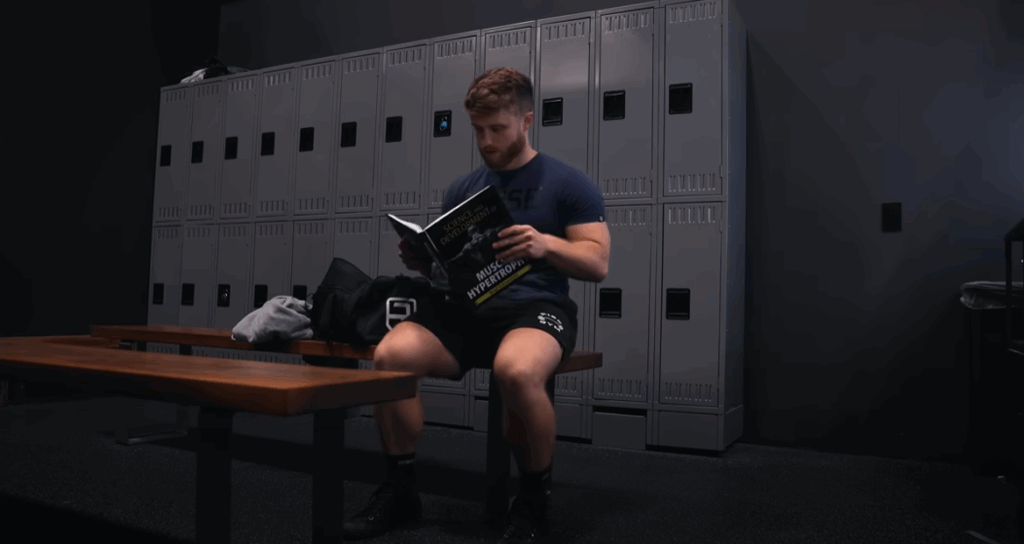In the world of fitness, most people are used to hearing advice that leans toward doing more: more sets, longer workouts, higher volume. This “maximalist” approach dominates most bodybuilding routines. But what if you’re short on time or simply don’t love spending hours in the gym? The good news is that you can still make serious progress with far less training than you might think. In fact, a minimalist approach can be surprisingly effective — if you apply it correctly.

Minimalism vs Maximalism in Training
Maximalist training is about squeezing out every last drop of progress, often requiring long, demanding workouts multiple times per week. It works, sure — but it isn’t sustainable or necessary for everyone. Most people aren’t trying to step on a bodybuilding stage or break powerlifting records. For everyday lifters who want to build muscle, stay healthy, and feel strong, minimalist training can deliver impressive results with a fraction of the time investment.
Minimalism isn’t about being lazy. It’s about doing what matters most and trimming the rest.
Real-Life Example: 20-Minute Training Sessions
Let’s take my brother as an example. He’s active, loves outdoor sports like golf, but has never enjoyed gym training. He started experiencing hip discomfort and felt weak at work, so I designed him a once-a-week, 20-minute workout: one push, one pull, and one lower-body movement. That’s it. Within weeks, his hip pain was gone and his strength improved noticeably.
This highlights a key point: consistency and effort often matter more than duration and complexity.
Strength Gains: How Little Is Enough?
Research consistently shows that building strength doesn’t require marathon workouts. A 2017 meta-analysis revealed that just one to four sets per muscle group per week can deliver over 80% of the strength gains compared to high-volume training. Even performing a single heavy set, one to three times a week, can lead to substantial improvements.
For example, squatting twice a week with one all-out working set each day — using heavy weights in the 1–5 rep range — is sufficient to get stronger. This works because strength is primarily a neurological adaptation. Your body learns to recruit muscle fibers more effectively in response to heavy loading.
Building Muscle With Minimal Time
Muscle growth (hypertrophy) is more volume-sensitive than strength. Typically, around 10 sets per muscle group per week is considered optimal. But does that mean fewer sets are worthless? Not at all.
A meta-analysis showed that doing just one to four sets per week results in about 64% of maximum hypertrophy. Doing five to nine sets per week raises that number to roughly 84%. That’s a big return for relatively little investment. One set of bicep curls to failure might take less than a minute — and still deliver meaningful progress.

The Catch: Train Hard, Train Smart
The lower your training volume, the more critical it becomes to push each set hard. High effort (close to or at failure) and perfect form are essential. Training with an RPE (Rate of Perceived Exertion) of 9–10 — meaning you’re either one rep from failure or reaching it — is what turns low volume into high impact.
Elite natural bodybuilders like Jeff Alberts have proven this. His minimalist pull days include just 2–3 sets per exercise, twice per week — and he’s one of the most respected physiques in natural bodybuilding. Execution and consistency are everything.
Time-Saving Techniques for Minimalists
Let’s look at a few practical strategies to make minimalist training even more efficient:
1. Drop Sets
Drop sets extend a set beyond failure by reducing the weight and continuing without resting. After hitting failure on your main set, drop the weight by 25–50% and go again. This adds effective volume quickly without increasing session length.
2. Sensible Supersets
Superset exercises that train different muscle groups to save time without sacrificing performance. For example, pairing bench press (chest) with rows (back) allows one muscle to rest while the other works. Just avoid supersets that target the same muscle, like doing triceps extensions right after bench press — fatigue can reduce performance and results.
3. Reduce Warm-Up Time
Minimalists should aim to cut down their warm-up without sacrificing safety. A 5-minute treadmill walk followed by some dynamic mobility is enough for most workouts. Machines and isolation lifts usually require fewer warm-up sets than barbell lifts, so prioritize them if time is tight.
Rest Periods: The Hidden Time Sink
Most gym time isn’t spent lifting — it’s spent resting. On average, lifters spend 70–80% of their workout resting between sets. While long rests (1–4 minutes) are recommended for maximizing hypertrophy and strength, you can shorten them gradually as your conditioning improves.
Start with 2-minute rests, then reduce by 15 seconds per week until you’re resting just 60 seconds between sets. This approach allows your cardiovascular system to adapt, helping you recover faster while still stimulating growth.

Maintaining Muscle With Even Less
Maintenance takes even less effort than building. A study by Bickel et al. found that trained lifters could maintain muscle mass for 8 months with just one-ninth of their usual training volume. So during busy periods (travel, exams, work overload), you can dial things back and still retain your gains.
Final Thoughts: Minimalism Works — If You Work It
Minimalist training isn’t about slacking off — it’s about being intentional. It’s ideal for busy professionals, parents, students, or anyone who wants to make fitness a part of life without it taking over. Whether you lift once or five times a week, what matters most is intensity, consistency, and smart programming.
If you’re just getting started, even one set per muscle per week taken to failure can spark progress. And if you’re experienced, trimming your routine down during hectic periods can keep you on track without burning out.
Minimalist training isn’t second-best — it’s simply another effective tool in your toolbox.



